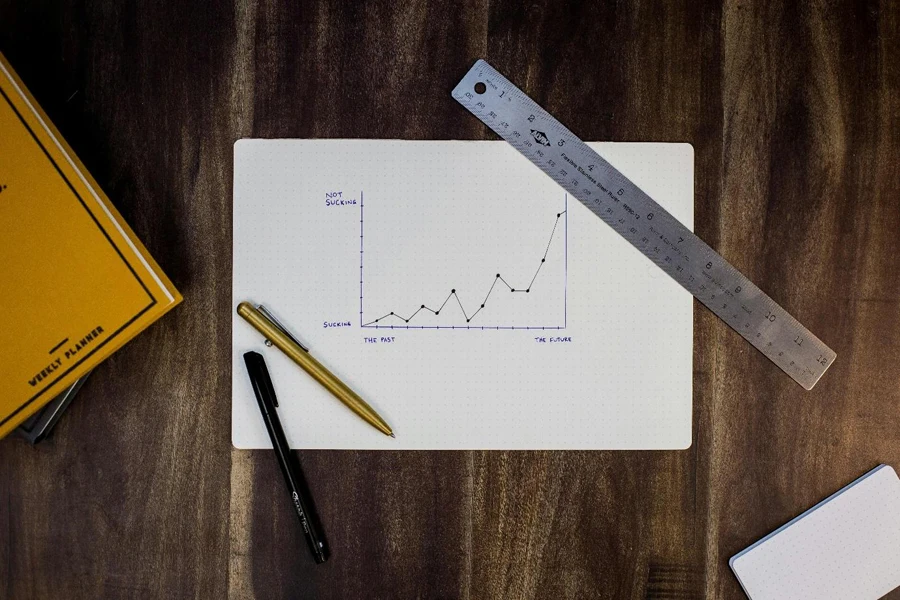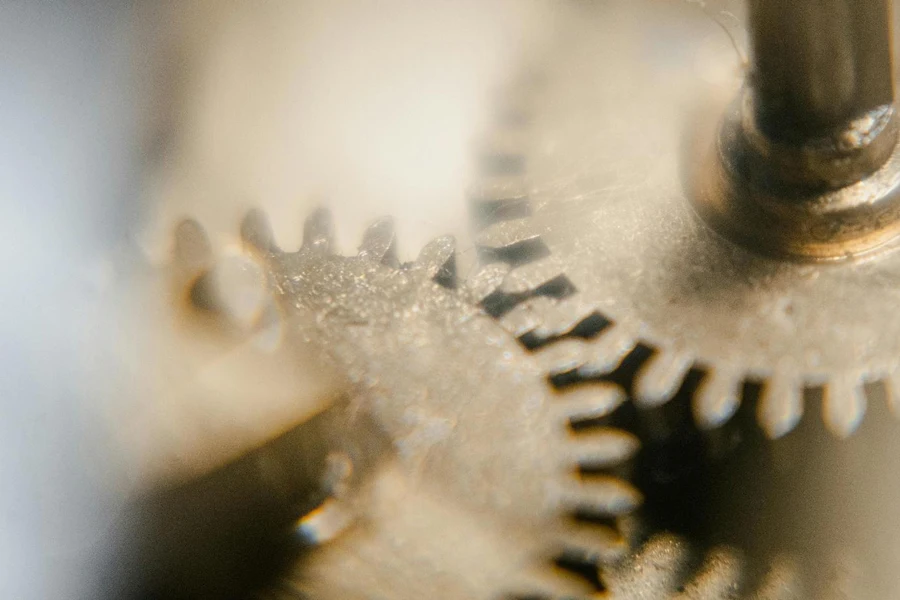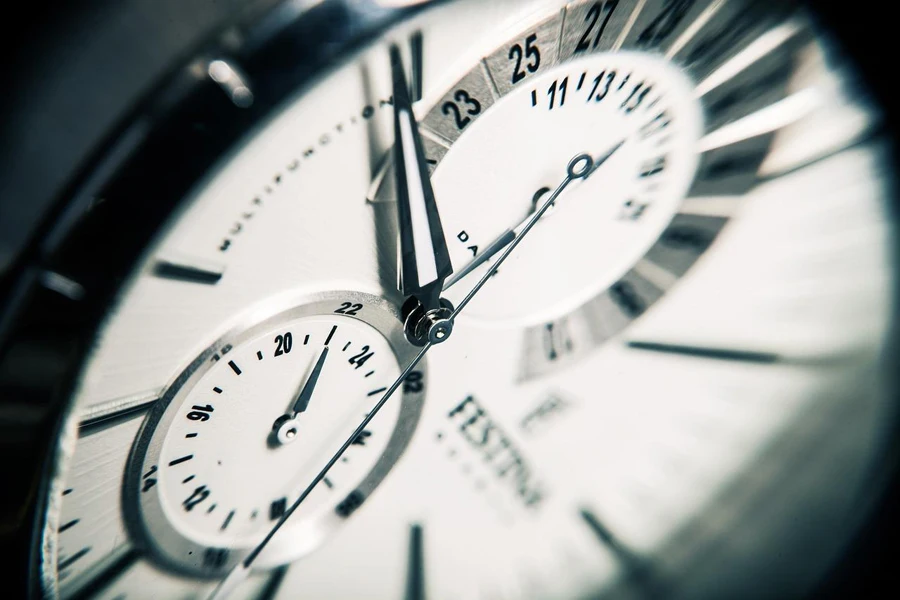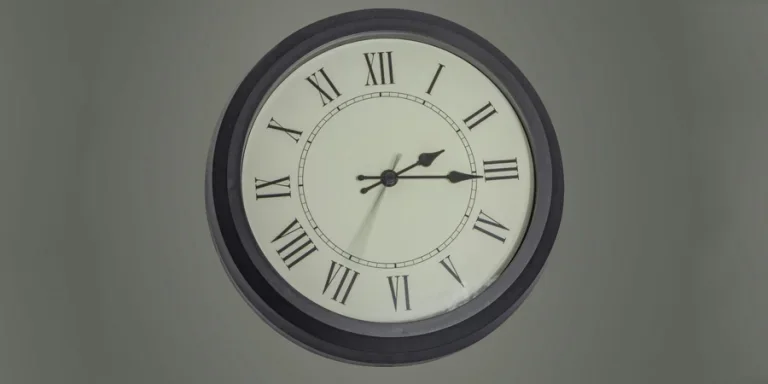Table of Contents
● Introduction
● Market overview
● Different types and their features
● Things to consider when selecting products
● Conclusion
Introduction

Mechanical clocks are timeless representations of accuracy and artistry that embody the essence of timekeeping with their mechanical workings. They not only function as practical timepieces but also add a touch of sophistication to any room as beautiful decorative accents. In the realms of design and collectibles, enthusiasts hold mechanical clocks in high regard for their classic designs and the careful craftsmanship that goes into making them. Their charm stems from the fusion of engineering principles with artistic flair, making them sought-after items for collectors and decorators with refined tastes. Mechanical clocks stand out in the market as both functional tools and artistic decorations that add a unique touch to any space.
Market overview

Market scale and growth
The worldwide market for wall clocks, encompassing a portion of conventional mechanical timepieces, was estimated to be around USD 6.70 billion in 2023, with expectations to hit USD 13.70 billion by 2030, marking a growth rate of approximately 5.10% annually. This expansion is fueled by a revived enthusiasm for vintage clocks, mostly mechanical ones that are valued for their artistry and visual appeal. Although digital and quartz clocks are widely popular among the public, mechanical clocks cater to a specific but profitable market niche that attracts enthusiasts and luxury buyers interested in the detailed craftsmanship and historical importance of these timepieces.
Regional insights
Different consumer preferences are evident in market shares; North America and Europe show a higher demand for classic mechanical clocks due to a cultural fondness for antique styles. In the Asia Pacific markets, there is a rising interest in contemporary options with smart technology integration. However, the global shift towards sustainability is impacting consumer choices worldwide with an increased interest in clocks made from eco materials and those featuring energy-efficient designs. The shift is in line with the growing focus towards sustainability in-home design as people look for items that blend style with eco-friendly approaches.
Different types and features

Grandfather clocks
Grandfather clocks stand out with their stature, usually between 6 to 8 feet, and their detailed mechanical workings that often involve an eight-day movement needing weekly winding only once. These timepieces come in crown styles that impact both their look and sound qualities. For example, a Bonnet Crown can boost the clock’s chime resonance, whereas a Split Pediment Crown, with a central finial, adds visual and acoustic richness. The inner workings usually consist of a weight-operated mechanism using cable or chain mechanisms for timekeeping purposes, while the wooden exteriors serve more than just decorative purposes. The density and variety of wood, like mahogany or walnut, can impact the sound properties of the clock’s chime by enriching its tone quality.
Mantel clocks
A spring-driven system commonly operates smaller and more compact mantel clocks to function smoothly and efficiently when placed on top of a shelf or mantel. The internal workings of these timepieces can differ notably between traditional models and newer contemporary versions. Traditional mantel clocks often include a time and strike feature where a single spring facilitates both timekeeping and striking functions. On the other hand, modern varieties may utilize quartz movement technology, which substitutes the mechanical escapement with a battery-powered quartz crystal oscillator, resulting in reduced maintenance requirements. Mantel clocks are usually intricately made from hardwoods and often feature a visible balance wheel or pendulum movement through a glass panel for both decorative purposes and to highlight the clock’s intricate engineering design.
Wall clocks
Mechanical wall clocks frequently use either a weight-driven or spring-driven system for their movements. The accurate oscillation of a pendulum is crucial in wall clocks as it directly affects timekeeping precision, and this is usually controlled by an escapement mechanism. High-end mechanical wall clocks may feature a deadbeat escapement for smoother operation and better time accuracy compared to the usual recoil escapement mechanism. Contemporary wall clocks that utilize quartz technology of traditional mechanisms switch out the mechanical escapement for a quartz crystal that vibrates consistently when powered by electricity to offer precise timekeeping with minimal upkeep requirements.
Cuckoo clocks
The intricate workings of cuckoo clocks are well known for their internal mechanisms that involve dual gong systems to produce the unique “cuckoo” sound in sync with the clock’s timekeeping functions. These clocks operate with two weights, one manages timekeeping, and the other controls the cuckoo feature. A common feature in these clocks is the Regula movement, which is renowned for its robustness and accuracy in triggering cuckoo calls and other automated actions. These clocks typically use a verge and foliot or recoil escapement to ensure the reliability required for their timekeeping and striking capabilities.
Other mechanical clocks
Bracket clocks are commonly equipped with a fuse and chain setup to ensure timekeeping using either a spring-driven or weight-driven mechanism along with a pendulum or balance wheel to regulate movement levels effectively. The fuse mechanism, a conical pulley that helps balance out the torque from the mainspring, is highly valued for its role in providing steady power distribution to the clock escapement system to maintain precise timekeeping throughout its winding cycle. Skeleton clocks reveal the workings by displaying intricate gear mechanisms and polished pivots that highlight the mechanical intricacies involved in timekeeping precision. The inclusion of bearings in these clocks reduces friction and wear on the components, making them more durable and accurate over time.
Things to consider when selecting products

Quality and craftsmanship
Choosing a good clock starts with checking the clockmaker’s reputation for precision and quality materials used in making it. Whether it is an old mechanical clock or a new one, it should not matter much as long as it has well-crafted gear trains with smooth pivots and jewel bearings for less friction and a longer lifespan. In antique clocks, specifically, look out for intricate features like the fusee and chain mechanisms that play a key role in controlling the power release from the mainspring; they are signs of top-notch craftsmanship. Ensuring that the clock keeps time over many years is crucial for these components to last long without losing precision in timekeeping mechanisms over timeframes spanning decades. Unlike older models of clocks that rely on traditional methods, modern mechanical clocks are often built with durable materials such as high-quality stainless steel or synthetic rubies in their escapements. These materials not only enhance longevity but also reduce wear and tear over extended periods of use. Additionally, the fine craftsmanship displayed in the casing is vital, showcasing intricate hand-carved designs and precise joinery work as distinguishing features of premium clockmaking.
Maintenance requirements
Traditional clocks such as grandfather and bracket clocks need to be maintained to keep them working well since they have complex inner workings like the deadbeat escapement or Graham escapement for improved precision that need careful adjustments when serviced. The antique clocks might have a verge and foliot escapement, which is an older mechanism that requires more frequent tuning due to its delicate nature despite its historical importance. Maintaining your clock regularly requires taking apart the workings to clean and oil every gear, pivoting carefully, and inspecting the bearings. If you have a weight-driven clock like the ones in grandfather clocks, you need to check that the weights and pulleys are aligned properly and working smoothly. Newer clocks with features like beat adjustment and night silencing may need less hands-on care, making upkeep simpler, but it’s still important to check them now and then to ensure everything is working as it should.
Aesthetic and design considerations
The appearance of a clock should blend well with its surroundings by considering both the aesthetics and the technical aspects of the clock itself. One instance is a clock equipped with a Split Pediment Crown that typically includes an arch and a central ornamentation where extra features such as a moon phase display or an automatic calendar could be housed. The way the wood finish is applied can impact how the clock sounds when it chimes mostly in chimed clocks like those made of walnut or cherry wood, which can affect the tone and volume of the chimes produced by the clock mechanism. It’s important to take into account the size of the clock in relation to how its pendulum is since longer pendulums tend to keep time better by being less sensitive to minor changes in external forces. When deciding where to put the clock, it’s important to think about things like the temperature and humidity in the room. These factors can impact how the wooden parts expand and contract, as well as how well the clock’s movement stays lubricated.
Investment value
When evaluating the investment value of a clock, it’s crucial to take into account the intricacy of its inner workings and mechanisms, as well as the uniqueness of its design and the historical context in which it was created. Clocks with added features, like chimes or intricate astronomical functions tend to hold greater worth because of the skilled craftsmanship needed to produce them. In antique clocks, the existence of the original components boosts their value significantly. For instance, having the original hands, dials, and weights is essential to preserve the clock’s authenticity. Moreover, the clock’s provenance plays a role in its appeal to collectors; a documented ownership history or a link to a well-known clockmaker can significantly enhance its desirability. Contemporary mechanical timepieces may not gain value like antiques do over time; however, if they are crafted by a respected maker specializing in exclusive editions or custom designs, they could still hold considerable worth as investments.
Conclusion

When choosing a mechanical clock, it’s important to think about quality and style while also considering how well it fits in with the room and how practical it is for everyday use. These factors will help you make a good investment that will last a long time. Select a timepiece that not only keeps accurate time but also adds to the beauty and charm of any space where it is placed. This way, you’ll have a clock that not only serves its purpose well but also adds a touch of class to any home or office setting.




